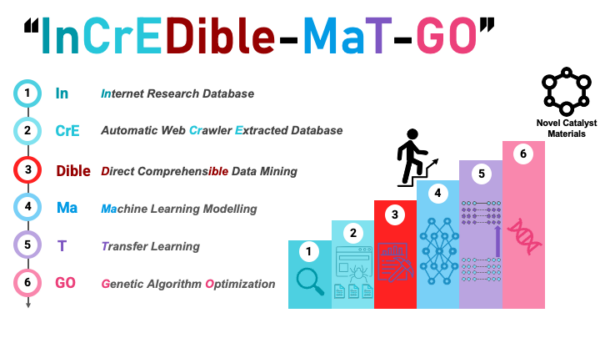The AI-Powered Pathway to Advanced Catalyst Development
In the quest for sustainable energy, the materials that drive crucial reactions in fuel cells and other green technologies are pivotal. At the University of Chicago and Argonne National Lab, a novel approach is being pioneered to discover these materials not through traditional experimentation but by mining the rich data from scientific literature using artificial intelligence (AI) and machine learning (ML). This method is not merely about digesting existing knowledge—it’s about predicting the future of green hydrogen energy production by identifying the most promising catalyst materials for boosting the processes.
This innovative work represents a notable shift in the approach to scientific discovery. By leveraging AI and the extensive information in scientific publications, the research team is accelerating the development of new materials, contributing to the advancement of clean energy technologies.
The Details:
The process starts with an advanced web crawler, which could automatically browse through internet academic databases. It navigates through scientific abstracts, extracting chemical data with precision. This crawler uses Python and specialized packages to translate scientific findings into a digital format that AI can analyze. It’s akin to training a robot to become an expert in scientific literature, resulting in a vast, rich database created efficiently.
Once the crawler has extracted this useful information, the next step uses ML, where algorithms are trained on this data to predict the performance of various materials in electrocatalytic processes. The researchers employ a method known as transfer learning, traditionally used in fields like natural language processing, to apply insights from one chemical domain to another. For example, it is like adopting a skill set from one discipline to excel in another, enhancing the AI’s predictive capabilities.
For the above mentioned whole ML-guided automated workflow, the researchers coined the acronym “InCrEDible-MaT-GO” for the proposed workflow to promote and remember the workflow techniques. Similar to the famous machine intelligence “AlphaGO,” it is expected to contribute to human society in the future by assisting discovery and obtaining new knowledge on “incredible materials” for researchers in various systems and tasks.

The Impact:
This strategy goes beyond expediting the discovery process; it’s about enhancing the precision of scientific prediction. By integrating the web crawler’s data with the predictive prowess of AI, the team can conceptualize new materials that are theoretically optimal, even before they are even physically produced in the lab.
This work has already made notable breakthroughs. For example, the theoretical prediction of an Ir–Cr–O system for oxygen evolution reactions, a vital component of water-splitting technologies. This material was not previously known but was later validated through experimental work, showcasing the predictive model’s potential.
The Excitement:
This research represents a significant stride in material science. AI’s role in interpreting scientific literature and predicting experimental outcomes is a sophisticated addition to the researcher’s toolkit. The “InCrEDible-MaT-GO” workflow exemplifies integrating data science, chemistry, and computer science, addressing some of the most challenging questions in energy research.
As new materials emerge in the energy sector, it’s essential to recognize the role of AI and digital data mining in these advancements. The future of material discovery is evolving, with AI playing a central role in bridging the gap between theoretical prediction and experimental validation.
Additional Resources:
This work was funded by the Eric and Wendy Schmidt AI in Science Postdoctoral Fellowship, a Program of Schmidt Futures.
